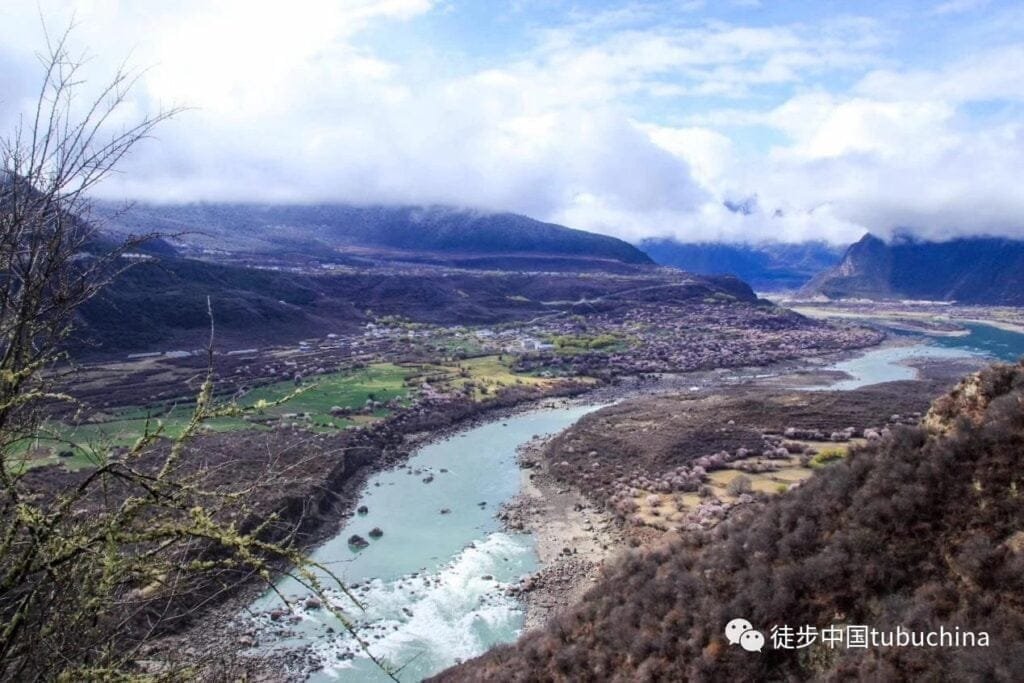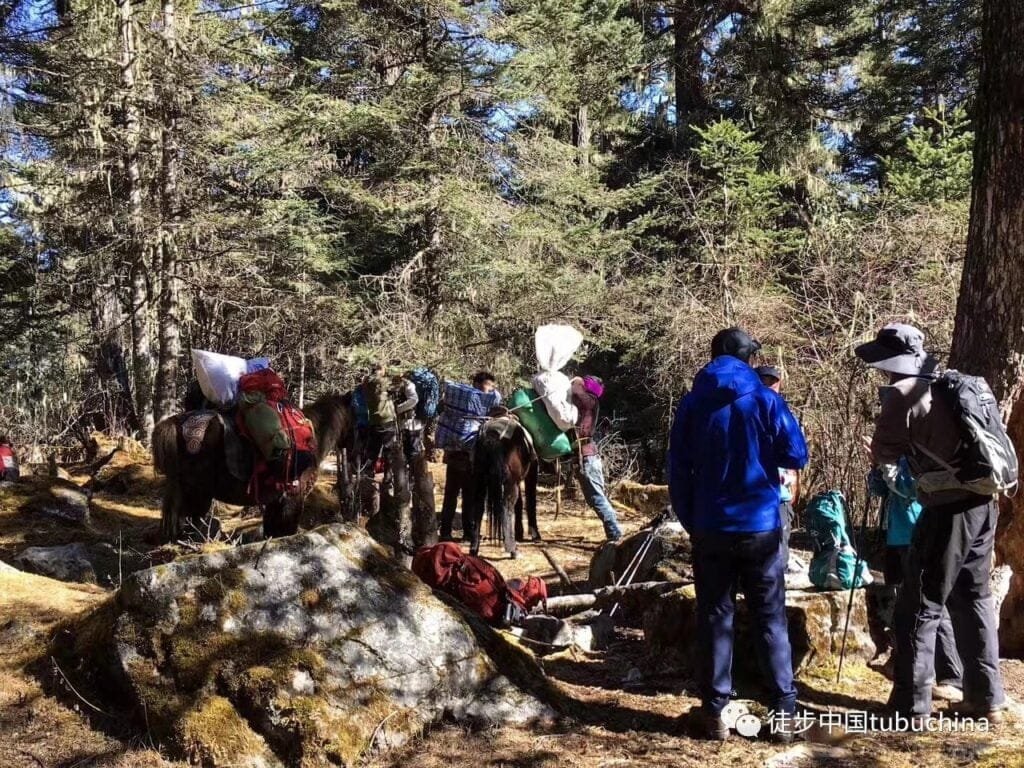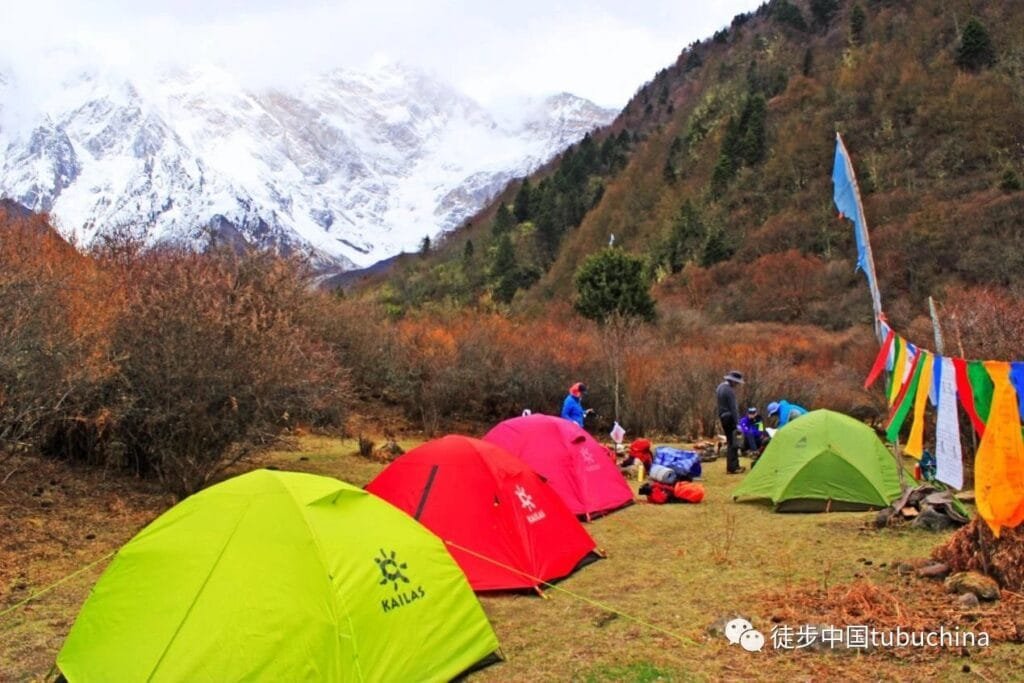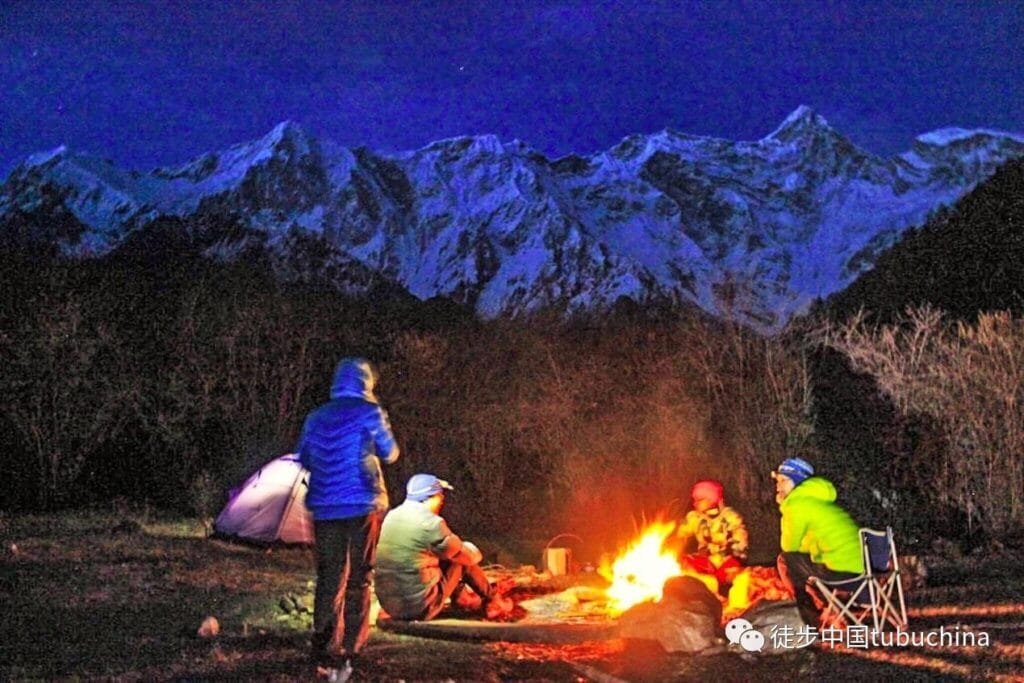Experience the Serenity of Tibet
- The Ideal Destination: Explore why Tibet, often referred to as a ‘Heavenly Realm’, is the perfect escape from the fast-paced modern world.
- Best Time to Visit: Uncover the best months (June, July, August) for experiencing Tibet’s natural beauty and cultural richness.
Namchak Bawa Peak: A Hiker’s Paradise
- Scenic Trails: Learn about the breathtaking landscapes and serene trails at Namchak Bawa Peak.
- Cultural Immersion: Engage with the unique Tibetan culture and spiritual practices during your hike.
Transformative Trekking: More Than Just a Hike
- Spiritual Journeys: Discover how trekking in Tibet can be a journey of personal growth and spiritual enlightenment.
- Pilgrimage Routes: Explore the significance of traditional Tibetan pilgrimage routes and how they enhance the hiking experience.
Top Recommended Hiking Routes
- New Leisure Hiking at Namchak Bawa Peak: Get insights into one of the most recommended and enriching hiking experiences in Tibet.
- Trail Highlights: Key features and attractions that make this route a must-visit for every trekking enthusiast.
Plan Your Tibetan Hiking Adventure
- Travel Tips and Guides: Essential information and tips for planning your hiking trip to Namchak Bawa Peak.
- Sustainable Tourism: Learn how to explore Tibet responsibly, respecting its environment and cultural heritage.
Namchak Bawa Hiking: A Spectacular Trek in Tibet
Namchak Bawa: The Crown of Nyingchi, Tibet
- Imposing Heights: Namchak Bawa, standing tall at 7,782 meters, is the highest mountain in Nyingchi, Tibet, and the 15th highest peak in the world.
- Unique Among Giants: Remarkably, the 14 mountains surpassing it in height all exceed the 8,000-meter mark, highlighting Namchak Bawa’s distinct stature.
The Enigmatic “Shy Peak”
- Perennial Snow and Mystery: Known for its snow-clad, triangular peaks shrouded in clouds and fog, Namchak Bawa is often elusive, earning the moniker “Shy Female Peak.”
- World Acclaim: This majestic peak has been acclaimed as the most beautiful snow peak in the world by National Geographic magazine.
A Trail of Beauty and Belief
- From Sacred Path to Hiking Trail: The hiking route here is an enhanced version of the local Tibetans’ traditional pilgrimage path, offering a rich blend of outdoor exploration and cultural depth.
- A Walk of Faith: For centuries, the local Tibetans, deeply spiritual, have traversed these trails with unwavering faith, believing in the sanctity of their natural surroundings.
The Trek Experience
- Scenic Marvels: The route through Namchak Bawa offers breathtaking natural scenery, providing an enchanting experience for trekkers.
- Challenging Yet Rewarding: The rugged terrain presents challenges that are as rewarding as they are demanding, making for an unforgettable journey.
Cultural and Spiritual Journey
- Immerse in Tibetan Culture: This trek is not just a physical journey but also an opportunity to connect deeply with the rich Tibetan traditions and spirituality.
- Understanding Tibetan Spirituality: The hike provides a unique window into the profound spiritual connection the Tibetans share with their land.
Trekking at Namchak Bawa is more than an outdoor adventure; it’s an expedition through some of the most stunning landscapes on earth, enriched by deep cultural and spiritual resonances. This trek is an essential experience for those seeking a remarkable adventure that combines awe-inspiring natural beauty with a profound cultural and mystical journey.
Shintso Hiking: Discovering Tibet’s Secluded Gem
Exploring Shintso: The Hidden Lake in Basongtso
- People often refer to Shintso in Basongtso as Tibet’s “Eastern Switzerland” for its stunning beauty and peaceful ambience. The name ‘Shintso’ derives from the Tibetan words ‘Shin,’ meaning ‘wood or tree,’ and ‘Tso,’ meaning ‘lake.’ This name aptly describes Shintso’s appearance, resembling a fallen tree, and highlights its status as a natural wonder.
Shintso: A Lake Shrouded in Mystery
- A Recent Discovery: Shintso is a relatively newly discovered lake, contributing to its mystique and unspoiled charm.
- Off the Beaten Path: Its obscurity means that Shintso remains a hidden treasure, known to only a few.
The Trek to Shintso
- A Quiet Journey: The hike to Shintso takes a little over two hours, offering a serene and contemplative experience away from the crowds.
- A Path Less Taken: Due to its relative anonymity, the route to Shintso is less frequented, preserving its pristine beauty and tranquillity.
Solitude Amidst Nature
- Escape into Serenity: Shintso is an ideal retreat for those seeking solitude and a deep connection with nature.
- Enchanting Surroundings: The lake is surrounded by lush landscapes, offering hikers a visually soothing and calming environment.
For the Adventurous Spirit
- A Challenge for Explorers: Shintso is perfect for hikers who seek adventure in less explored territories.
- Journey of Discovery: Trekking to Shintso is about uncovering the hidden jewels of Tibet’s natural landscape.
Shintso Hiking is not just an ordinary trek; it’s a journey into one of Tibet’s less-known but immensely beautiful natural settings. Ideal for those seeking peace, solitude, and a unique connection with untouched nature, this trek stands out as a must-experience for adventurers and nature lovers alike.
Brief Itinerary of the Trek
DAY 1: Lhasa Gathering
- Altitude: 3650m
- Activities: Arrival and acclimatization in Lhasa, the capital of Tibet.
DAY 2: Lhasa to Basongtso via Mira Pass
- Altitude: 3100m
- Route: Travel from Lhasa, crossing the Mira Pass, to reach Basongtso, known for its stunning lake.
Day 3: Basongtso – Shintso – Hua Gao Village – Ji Bata Village
- Exploration: Visit the serene Shintso, then proceed to Hua Gao Village and Ji Bata Village, experiencing local culture and landscapes.
DAY 4: Ji Bata Village to Sosong Village
- Highlights: Trek from Ji Bata Village, pass the Confluence of the Two Rivers, visit the Danniang Sand Dune, and end the day in Sosong Village.
DAY 5: Sosong Village to Zhibai Village
- Journey: Travel from Sosong Village to Zhibai Village, enjoying the scenic beauty and unique Tibetan villages along the way.
DAY 6: Zhibai Village to Namchak Bawa Peak Camp
- Destination: Reach the camp near Namchak Bawa Peak, preparing for the next day’s exploration of this majestic mountain.
DAY 7: Namchak Bawa Peak Camp to Paixiang, then to Highway 81
- Adventure: Explore the area around Namchak Bawa Peak Camp and proceed towards Paixiang, eventually reaching Highway 81.
DAY 8: Highway 81 to Lhasa
- Return: Conclude the trek by traveling back to Lhasa from Highway 81, marking the end of this incredible journey.
This itinerary offers a blend of high-altitude trekking, cultural immersion, and exploration of some of Tibet’s most breathtaking landscapes, including the majestic Namchak Bawa Peak. Each day unfolds a new aspect of Tibet’s natural beauty and rich cultural tapestry, making for an unforgettable adventure.
DAY 1: Lhasa Gathering – Altitude: 3650m
Arrival in Lhasa
- Travel Flexibility: Group members will converge in Lhasa from various locations. Participants have the choice of arriving by plane or train, based on their preference.
- No Time Restrictions: Arrival time is flexible, as long as it’s within the same day.
Acclimatization and Rest
- Adapting to Altitude: Upon arrival, group members can rest in their hotel to adjust to the high altitude environment of Lhasa.
- Health Precautions: It is advised not to shower or wash hair on the first day to prevent colds, which can be aggravated by the altitude.
Meals and Accommodation
- Meals Provided: Dinner is included on this day.
- Hotel Stay: Accommodation is arranged in a four-star standard hotel in Lhasa. Features include a standard room with a private bathroom.
This first day is crucial for acclimatizing to the high altitude and provides an opportunity for group members to meet and prepare for the upcoming adventure. The focus is on rest and adjustment to ensure a smooth and enjoyable trekking experience.
DAY 2: Lhasa to Basum Tso via Mila Pass – Altitude: 3100 meters
Travel Along the Lhasa-Nyingchi Expressway
- Scenic Drive: The day begins with a hearty breakfast, followed by a journey on the Lhasa-Nyingchi Expressway.
- Crossing Mila Pass: The route includes crossing the 5013-meter-high Mila Pass, offering stunning high-altitude views.
Descending into Diverse Vegetation
- Rich Natural Scenery: As the group descends, the vegetation becomes increasingly lush, showcasing the region’s ecological diversity.
Arrival at Basum Tso
- Sacred and Scenic Lake: Basum Tso, also known as “Three Rocks Lake,” is a revered and significant lake in Nyingchi and the largest barrier lake in Eastern Tibet.
- Lake Characteristics: This crescent-shaped lake is set in a deep valley, surrounded by snow-capped mountains, presenting a picture of serene beauty.
Leisure Time and Exploration
- Lakeside Hotel Stay: Accommodation is arranged in a hotel by the lake within the scenic area, offering stunning views and a tranquil environment.
- Enjoying Basum Tso: There will be plenty of time for everyone to explore and appreciate the serene beauty of Basum Tso at a leisurely pace.
Meals and Accommodation
- Meals: Include all meals (breakfast, lunch, and dinner).
- Accommodation: Overnight stay in Jieba Village with standard rooms equipped with private bathrooms.
This day of the journey allows trekkers to experience the breathtaking landscapes of Tibet’s high-altitude passes and the tranquil beauty of Basum Tso. The drive along the Lhasa-Nyingchi Expressway and the Mila Pass provides an opportunity to witness the region’s diverse natural beauty, setting the stage for a peaceful evening by the lake.
Day 3: Basum Tso – Shintso – Woeka Village – Gekyi Village
Morning Excursion to Sangtong Ranch
- Travel to Sangtong Ranch: The day begins with breakfast followed by a 30-kilometer drive deep into Basum Tso to reach Sangtong Ranch, situated at an altitude of 3700 meters.
- Exploring Shintso Lake: Within Sangtong Ranch lies Shintso, a less-known yet stunningly serene lake, reminiscent of a hidden paradise.
Hiking to Shintso
- Trek Duration: The hike to reach Shintso is about 2 hours for a 1.5-kilometer distance.
- Serene Experience: On arrival, trekkers can enjoy the peaceful and exclusive atmosphere of this secluded spot.
- Lunch Preparations: Hikers should bring snacks for lunch, considering the 6-hour round trip hike to and from Shintso.
Afternoon Journey to Woeka Village
- Visiting Woeka Village: The afternoon includes a visit to Woeka Village, located at the end of Basum Tso, offering an authentic experience of rural Tibetan life.
- Return to Gekyi Village: The day concludes with a return to Gekyi Village for the night’s stay.
Meals and Accommodation
- Meals Provided: The day includes breakfast, lunch (snacks by participants), and dinner.
- Accommodation: Overnight in Gekyi Village, in standard rooms with private bathrooms.
Day 3 of the trek is a blend of nature and cultural exploration. The hike to Shintso offers a tranquil escape, while the visits to Woeka and Gekyi villages provide insights into the traditional and untouched aspects of Tibetan village life. The day promises a fulfilling experience of both scenic beauty and cultural richness.

DAY 4: Kyipa Village to Sozong Village via Tsangpo Grand Canyon
Journey to the Yarlung Tsangpo Grand Canyon
- Destination: Yarlung Tsangpo Grand Canyon, the world’s deepest canyon, often likened to the “south of the Yangtze River in Tibet.”
- Scenic Route: The journey includes passing through the confluence of two rivers and the Danyang Sand Dunes, offering diverse landscapes.
Enchanting Evening Views
- Evening Scenery: From your accommodation in Sozong Village, you can enjoy the view of Namchak Bawa Peak, resembling the scenic vistas of Pokhara.
- Starry Night: The night sky here, bright with stars, promises an unforgettable experience.
Meals and Accommodation
- Meals: Include all meals (breakfast, lunch, and dinner).
- Accommodation: Stay in Sozong Village, offering multiple rooms with public toilets.
This day of the journey provides a blend of natural wonders and breathtaking evening views. Travelling through the Yarlung Tsangpo Grand Canyon offers a glimpse into some of Tibet’s most stunning landscapes, while the evening in Sozong Village allows for a peaceful and memorable end to the day under a starry sky.

DAY 5: Sozong Village to Zhibai Village via Dalin Village
Hike from Sozong Village to Dalin Village
- Morning Start: The day begins with breakfast in Sozong Village.
- Scenic Hike: The hike takes you through the mesmerizing landscapes along the Yarlung Tsangpo River Grand Canyon.
- Enchanting Views: Along the way, the distant villages and forests provide picturesque vistas.
Arrival at Zhibai Village
- Evening in Zhibai Village: The journey concludes at Zhibai Village, located at the foot of Namchak Bawa Peak, offering stunning views of the surrounding mountains.
- Immersive Experience: Staying in Zhibai Village allows for a closer connection with the local culture and the natural beauty of the area.
Meals and Accommodation
- Meals Provided: Include all meals (breakfast, lunch, and dinner).
- Accommodation: Overnight stay in Zhibai Village, featuring multi-person accommodations with a bathroom.
Day 5 of the trek is a journey through the heart of Tibet’s natural beauty, with the trail offering panoramic views of the Yarlung Tsangpo River Grand Canyon. The day ends in the serene Zhibai Village, nestled at the base of the magnificent Namchak Bawa Peak, providing a peaceful and culturally rich end to the day’s adventures.

DAY 6: Zhibai Village to Namchak Bawa Peak Camp
Beginning the Challenging Trek
- Morning Kick-off: The day starts with breakfast in Zhibai Village.
- Intense Hiking Day: The trek to Namchak Bawa Peak Camp is more demanding, offering a challenge for avid hikers.
Experiencing Namchak Bawa Peak Up Close
- Camp at Base Camp: The destination for the day is the base camp of Namchak Bawa Peak, providing a unique opportunity to witness the peak’s grandeur from a close perspective.
Meals and Accommodation
- Meals: Include all meals (breakfast, lunch, and dinner).
- Accommodation: Overnight stay in tents (2 people per tent). Tents and sleeping bags are provided, but it’s recommended to bring your own sleeping bag for cleanliness and hygiene.
Day 6 is a pivotal point in the trek, marked by a rigorous hike to the base camp of Namchak Bawa Peak. This day offers an unparalleled experience of being in close proximity to one of Tibet’s most iconic peaks, coupled with the adventure of camping in the wilderness. The day’s efforts are rewarded with stunning views and a unique sense of accomplishment.

DAY 7: Namchak Bawa Peak Camp to Paixiang, then to Bayi Town
Descending from Namchak Bawa Peak Camp
- Morning Departure: The day begins with breakfast at the Namchak Bawa Peak Camp.
- Downhill Journey: The descent follows the same path used to ascend, offering one last opportunity to admire the majestic southern peak and the grandeur of the Grand Canyon.
Returning to Bayi Town
- Final Destination: The trek concludes with a return to Bayi Town, the capital of Nyingchi, by the evening.
- Reflecting on the Journey: This day offers a chance to reflect on the breathtaking views and experiences of the past week.
Meals and Accommodation
- Meals: All meals (breakfast, lunch, and dinner) are included.
- Hotel Stay: Accommodation is arranged in a four-star standard hotel in Bayi Town, featuring standard rooms with private bathrooms.
Day 7 marks the completion of the trekking journey, allowing trekkers to relive the memories of the past days while comfortably descending back to civilization. The return to Bayi Town signifies a transition from the ruggedness of the mountains to the comforts of modern amenities, providing a restful end to an adventurous trek.
DAY 8: Bayi Town to Lhasa
Return Journey to Lhasa
- Morning Start: The day begins with breakfast in Bayi Town.
- Scenic Drive: The group will travel back to Lhasa via National Highway 318, a route known for its scenic beauty.
- End of the Trek: This drive marks the conclusion of the memorable and enjoyable trekking journey.
Meals and Accommodation
- Meals: All meals (breakfast, lunch, and dinner) are included for the day.
- Accommodation: The night’s stay is arranged in a four-star standard hotel in Lhasa, equipped with standard rooms and private bathrooms.
This final day of the trek offers a relaxing drive back to Lhasa, allowing participants to reminisce about their adventure and the stunning landscapes they’ve encountered.

